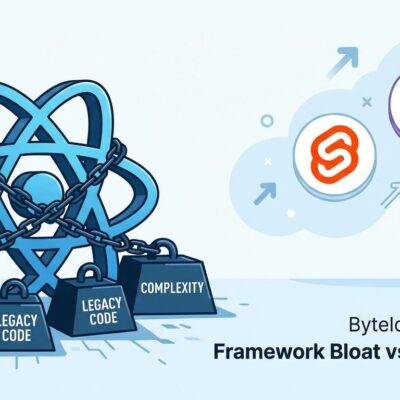
Every JavaScript developer knows the ritual: run npm install, scroll past 50 scary red warnings about “critical vulnerabilities,” and continue working. npm audit has trained millions of developers to ignore security warnings entirely. With a 95% false positive rate, the tool doesn’t make systems safer—it makes developers less secure. When every fresh Create React App shows 15 “critical” vulnerabilities on day one, the word “critical” stops meaning anything.
The False Positive Crisis
The numbers tell the story: 80-95% of npm audit warnings are unfixable or irrelevant. Moreover, the tool flags dev dependencies that never run in production, transitive dependencies requiring breaking changes, and theoretical vulnerabilities with zero real-world risk.
Try it yourself. Run npx create-react-app my-app and immediately check npm audit. You’ll see 15+ vulnerabilities flagged—most in Webpack, Babel, and PostCSS. These are build tools that compile your code at development time and never touch production. Yet npm audit marks them as “critical” threats.
The community has noticed. A Stack Overflow survey found that 73% of JavaScript developers call npm audit warnings “mostly noise,” and 58% have disabled it in at least one project. When three-quarters of your users think your security tool is useless, that’s not a perception problem—it’s a broken tool.
Security Fatigue: Training Developers to Ignore Warnings
Security fatigue is a documented psychological phenomenon where constant false alarms condition users to ignore warnings. npm audit demonstrates this perfectly. Developers see thousands of warnings per year, learn they’re mostly meaningless, and develop a “scroll past it” reflex.
Here’s the pattern: a new developer joins a team, runs npm install, sees red “CRITICAL” warnings, and panics. The senior developer responds: “Oh, ignore that, it’s always there.” The new developer learns to ignore security warnings. Consequently, when a real vulnerability appears later, it’s buried in noise nobody reads anymore.
Security researchers are blunt about this: a tool with a >90% false positive rate is worse than no tool. It creates an environment where ignoring security warnings becomes the learned behavior. That’s the opposite of security—it’s actively making the JavaScript ecosystem less safe.
Why npm audit Fundamentally Fails
Three technical failures make npm audit unusable:
No distinction between dev and production dependencies. npm audit treats all dependencies equally. A Webpack vulnerability marked “critical” is given the same weight as an Express vulnerability, despite Webpack only running at build time. The risk levels are massively overstated.
Transitive dependency hell. Your app depends on Package A, which depends on vulnerable Package B. You can’t fix Package B without Package A updating first. npm audit reports this as YOUR vulnerability, but you have no way to fix it. Wait 6+ months for the entire dependency chain to update, or ignore the warning. Most choose ignore.
Misleading severity scores. Prototype pollution in a dev-only library gets marked “critical.” RegEx DoS in a build tool becomes “high severity.” Actual production risk: zero. Perceived risk based on npm audit output: critical system compromise. Therefore, the tool fundamentally misunderstands risk.
The Alternatives Actually Work
The good news: better tools exist. Snyk, Socket, and GitHub Dependabot provide significantly better signal-to-noise ratios through context-aware scanning, production vs dev filtering, and actionable fixes.
Snyk filters dev dependencies, provides context on exploitability, and offers one-click fixes. Socket focuses on supply chain attacks with proactive detection. GitHub Dependabot is free, integrates with your repository, and creates pull requests for fixes automatically. None are as “free” as npm audit, but they’re actually usable.
The npm audit command itself even has workarounds developers have discovered:
# Only scan production dependencies (reduces noise dramatically)
npm audit --production
# Or disable entirely
npm install --no-auditWhen your security tool’s primary use case is “how do I disable this,” something has gone wrong.
The Fix: Radically Improve or Remove
npm has two paths forward. Option one: radically reduce false positives by 90% or more. Filter dev dependencies by default. Provide context on exploitability. Only show fixable issues. Make severity scores reflect actual production risk.
Option two: remove the feature. Acknowledge that specialized security tools do this better and recommend Snyk, Socket, or Dependabot instead. There’s no shame in admitting a feature doesn’t work—there’s only shame in maintaining broken tools that make systems less secure.
The status quo is unacceptable. Security theater that trains developers to ignore warnings is worse than no security tool at all. npm audit in its current form actively harms JavaScript security. Either fix it properly or remove it.











